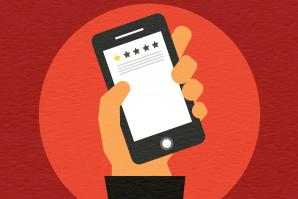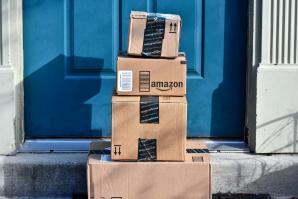Rewarding customer loyalty is a great way to build a community and encourage repeat business, but too often client rewards are an afterthought that ruin the goodwill you’re trying to build.
Mistake No. 1: Just throwing in some extras
Giving your client unsold products as a “bonus” can be an easy way to clean out your storage room — but if done carelessly, it might demonstrate that you don’t care about your customers. If you have an overabundance of products that you’d like to gift to clients, do it strategically and be sure to tell them why they’re getting this particular bonus.
This applies to businesses selling digital products as well. I once received the “gift” of a program from a coach of mine with their profuse thanks and directions on how to redeem the digital course. The only problem was I’d already purchased and completed the course, so what was meant to be a nice gesture only told me they did not pay attention to their clients. Instead of giving away a generic gift, take some time to look at your client’s purchase history and habits to make a thoughtful selection.
Mistake No. 2: Rewards that primarily benefit your business
Curse the marketer who began to collect customer email addresses for a VIP mailing list. No matter how you pretty it up by sharing coupons, sales, giveaways or funny pictures of cats, a mailing list is not a customer reward. If anything, it creates a burden on the client and clutters up their inbox.
Rewards that help you build a following, gather demographics or establish influence are beneficial to your business, not your customers. You can absolutely use surveys, newsletters and VIP lists in your marketing — just don’t label them as “rewards.”
Mistake No. 3: Forgetting about what the customer actually wants
Years ago when I worked at a popular video rental store, I would see this mistake played out every Friday night shift. We’d offer bundles that nobody really wanted. One bundle would give customers the option of renting a game for Playstation 3 for half price, except most of our customers didn’t own a PS3. We’d promote a candy bundle and an already frazzled parent would say “no” and spend the next five minutes arguing with their children — who were standing at eye level with our candy displays.
In order to know what your customers want as rewards, you’ll need to ask them. Here are two examples of truly excellent rewards programs that customers love:
Example No. 1: Ludy’s Main Street BBQ, Woodland
If you eat at Ludy’s restaurant in December, you’ll get the usual fare and a sealed red envelope with every purchase. Each envelope has the same instructions: Keep it sealed and return in January for a meal. Open the envelope at in front of the cashier to claim discounts, cash and other prizes.
It’s a brilliant promotion because it relies on the exciting mystery of what you’re going to get (no peeking!) and gives customers more of what they’ve already purchased. Best of all? Its simplicity. All you need are printed envelopes and some gift certificates and coupons.
Example No. 2: AppSumo.com
AppSumo, started by a colleague of mine, Noah Kagan, sells online programs and digital “deals” — a similar concept to Groupon but for online classes. To build their list and get brand recognition AppSumo ran a series of contests. All you need to do is join the list to be entered to win and every time you share the contest and someone else joins you get another entry.
Best of all: The prizes were exactly what their clients wanted to receive, and included a new MacBook computer, a bundle of 20-plus business books (many of them signed by the author), a a lifetime subscription to Netflix, gift cards to Amazon. Even if you didn’t know what AppSumo sold, you wanted to share the contest for the chance to receive a prize that was in line with your values and wishlist.
Every business needs to learn this lesson: When you understand your ideal client and what motivates them, you can create powerful and compelling rewards to encourage behavior whether that’s signing up for a list or purchasing a sandwich. The power of giving gifts and rewards that clients actually appreciate is that you show you listen, care and understand their needs.
Recommended For You

How to Handle Negative Reviews
Don’t let a criticism bring you down — or kill your business
What is it about New Year’s and resolutions? They go together like peanut butter and jelly, but while it may be easy to make resolutions galore, keeping even one is much harder. Entrepreneurs setting 2017 goals will likely think about better marketing campaigns, adding more loyal customers, providing excellent service to clients and keeping a great reputation in the market.

How to Raise Rates the Right Way
Your business can increase its rates without turning off clients
Earlier this year, I was booking an appointment with a company I’d frequented for the past eight years when the receptionist informed me that their rates were changing — increasing by 25 percent, effective end of the week.

Plan Your 2017 Strategy Now
Entrepreneurs and business owners always need to be planning ahead
While we’re several months away from the deluge of articles and general business obsession over 2017 goals, plans and strategy, now is the ideal time to determine your first quarter goals and plans.

The Amazon Sales Tactic You Should Absolutely Copy
Why your business needs its own ‘Prime Day’
Your company could benefit from its own version of an online retail event to drive excitement, loyalty and sales.



